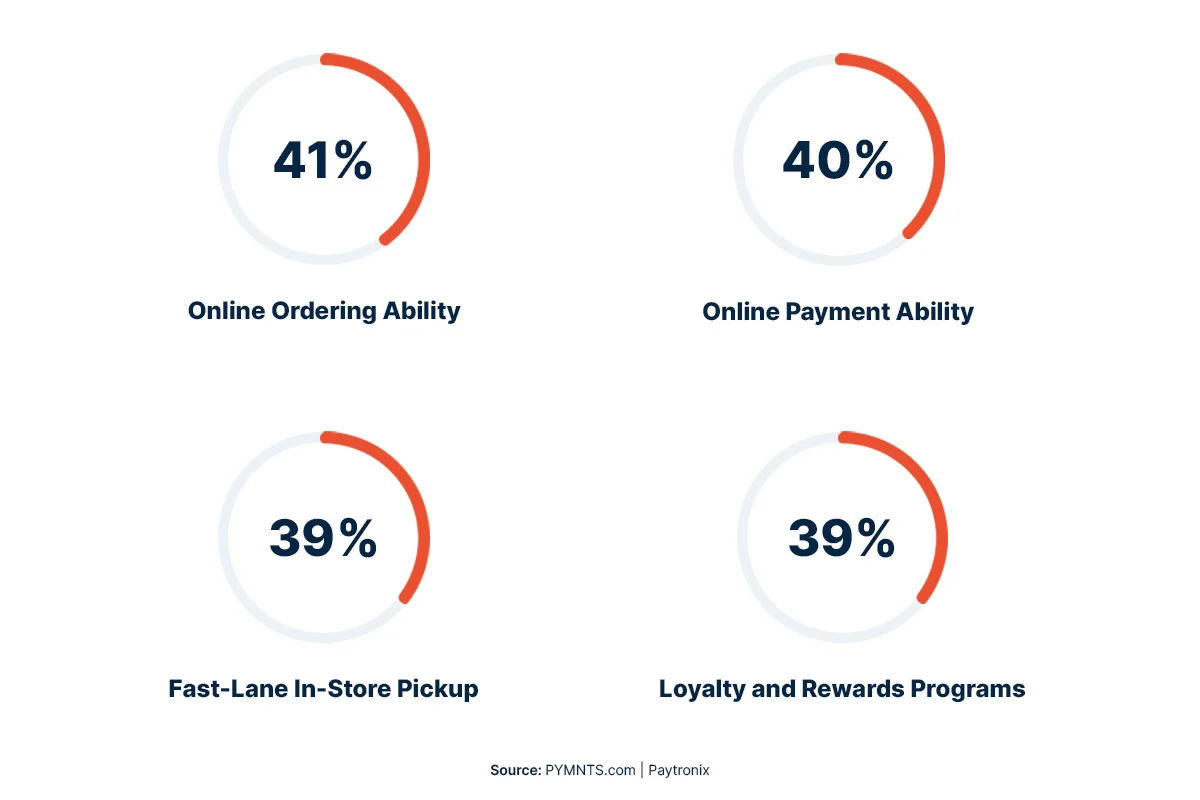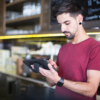Technology has revolutionized the restaurant industry, but the heartbeat of this transformation is often forgotten – Point-of-Sale (POS) systems. With operators looking to maximize their potential, POS software capabilities are being extended beyond fixed terminals and into mobile devices with additional integrations.
Restaurant technology is always evolving, but the COVID-19 pandemic that hit in 2020 has caused the biggest shift in how consumers now use technology. When indoor dining returned after the shift from off-premise-only models, it came with an emphasis on contactless ordering and paying.
What the POS software space will look like in 2023 is an interesting topic – overall themes including:
- Upgrading POS Software.
- Self-Service Options.
- Online Ordering.
- Menu Optimization.
- New Payment Methods.
- Loyalty Programs.
Top 6 Restaurant POS Software Trends to Know in 2023
Below, we’ll look at this year’s POS software trends found among restaurant operators’ purchasing decisions and explore how the market is shifting to accommodate consumers’ changing preferences.
1. Upgrading POS software is the highest priority.
Expanding upon current POS functions remains an everlasting purchasing plan favorite, as there are new and demanding features that continue to emerge. According to Hospitality Technology’s 2023 POS Software Trends Report, nearly 71% of restaurant operators plan to add new functionality, features, and modules to their current POS software.
New features show the influence these technological advancements have on the purchasing plans for operators. This isn’t just something operators want to see, customers are hungry for more too. Consumers revealed four key technological features that would encourage them to make purchases at restaurants in a survey conducted by PYMTS.com. The breakdown of the portion of consumers who indicated select features is featured below.
2. Self-service options are evolving.
The rise of self-service orders and pay continues to grow. Around 57% of operators plan to enable self-service options in their next upgrades. These technologies are making it easier and faster than ever before for restaurants to process orders while also creating additional convenience for their customers.
From kiosks to mobile ordering apps, self-service ordering eliminates much of the transaction frustration of standing in long lines or waiting long periods of time for your order. In fact, 65% of consumers demand self-service options like kiosks.
Furthermore, self-service options are eliminating labor costs associated with traditional waitstaffs, restaurants are enjoying a boost to their bottom line that comes from these automated systems. Kiosks are increasing revenue, with orders on average 15-20% higher in value than orders placed traditionally.
As more establishments move toward this technology, many experts predict that it will become the industry standard within a couple more years.
3. Online ordering is in high demand.
The growth of online ordering has a tremendous effect on restaurant revenue. Restaurant owners say that about 43% of their POS purchases come from online orders.
With customers being able to order takeout from their favorite restaurants with just the click of a button, these popular services made ordering food easier than ever. As a result, places that offer online ordering have seen an uptick in their takeout sales, helping to boost their overall profits.
Key findings show that 54% of adults say purchasing takeout or delivery food is essential to the way they live, including 72% of millennials and 66% of Gen Z adults.
Many operators are now integrating their POS systems with third-party delivery apps to make it even simpler for their customers. Whether at home or in the office, your menu can be accessed by the touch of a button, allowing customers the convenience of having meals delivered right to their door.
It is projected that online ordering food revenue will rise to $220 billion in 2023 – 40% of restaurant sales.
4. Menu optimization is offering data into customers’ demands.
Menu optimization is becoming increasingly necessary for businesses to prioritize the value of their customers’ experience. About 71% of restaurant operators are using menu performance analysis to gather data along with sales information from their POS. This data is being used to provide meaningful insights into customer preferences and better inform their menu decisions.
As customer attitudes and preferences become more diverse than ever before, catering your menu offerings to fit specific tastes has become a definitive aspect of success in the service industry.
By tapping into data that tracks purchasing habits and behaviors, it becomes possible to understand which items work and why they do – giving companies an edge in keeping customers satisfied while ensuring greater profits and longevity.
At its best, menu optimization provides powerful insights into how food selection affects sales strategies.
Read more: What is Menu Analysis?
5. New payment options are providing convenience.
For restaurant owners and customers, convenient payment options are essential for ordering and dining. Nearly 57% of operators say enabling new payment options are impacting their next POS upgrades.
With the demands of modern life, having easy, quick payment methods is a priority so people can spend less time waiting around and more time enjoying their meals.
These technologies can range from contactless payments, pay at the table, curbside, and more. About 82% of customers feel safer with contactless payments.
Currently, 94% of U.S. restaurants offer contactless payment options, and that percentage only continues to grow as time goes on. All of these payment options provide a quicker transaction time than traditional cash or card methods – resulting in a satisfied customer experience.
6. Loyalty programs are driving POS purchases.
With so much competition in today’s industry, restaurant loyalty programs are quickly becoming a way for businesses to stand out from the crowd and keep their customers coming back. Operators are recognizing this, with loyalty tools driving 43% of their POS purchases.
Restaurateurs know if they’re going to stay relevant, they need to reward loyal customers with discounts or special offers. The numbers speak for themselves, 41% of consumers say loyalty programs encourage them to buy from restaurants.
Loyalty programs offers an array of benefits not only for your customers, but for your business as well. These options allow restaurants to track information such as what items customers purchase, as well as what time of day they visit. This information can be used to offer targeted promotions and rewards to increase retention, visits, and order size.
In fact, research shows that increasing loyalty 5%, increases overall profits by 25-95%.
How Connected Technology In Restaurants Will Take Over in 2023
The POS software of today is already enabling restaurant owners to have more control over their operations, enhance customer experiences, and nurture their business’s growth. This year, we can expect even more efficient and intelligent features as restaurants will be able to leverage sophisticated technologies such as automated ordering, inventory management, curbside pickup, and more to stay ahead of the competition. As our Chief Revenue Office, Brandan Rabdau, mentioned in a Hospitality Technology Q&A:
“The future of POS software is about engaging with customers in new ways. The POS system has become more than just an ordering and payment station. It now offers automated features and integrations that can scale according to your restaurant’s needs today, or five years from now, regardless of the ordering journey. The successful POS solutions will be commerce-based solutions that extend to provide consistent touchpoints to the customer.”
Whether it’s today or five years from now, CAKE’s Platform is providing the technology necessary for a profitable future for restaurant owners.






